#Interior reference
Explore tagged Tumblr posts
Text
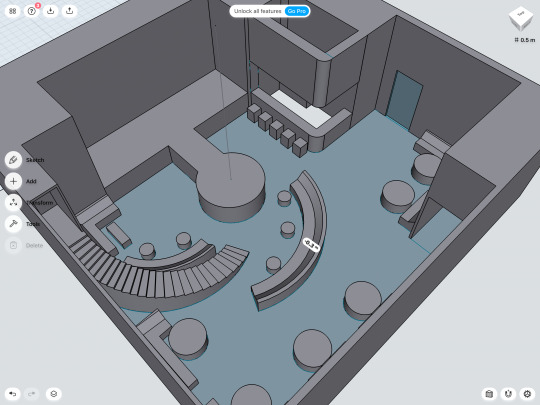
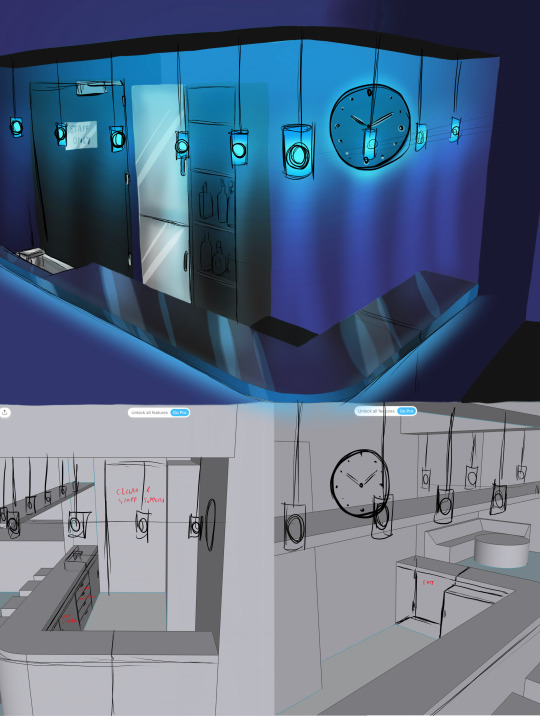
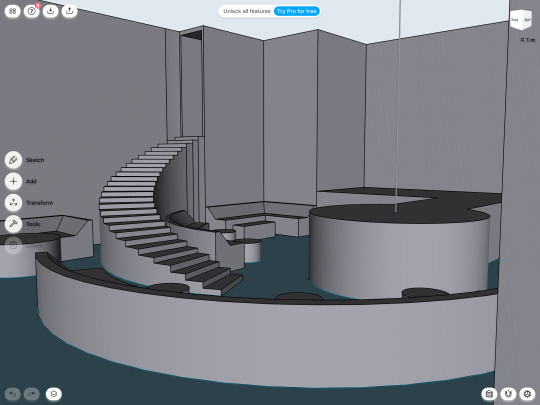
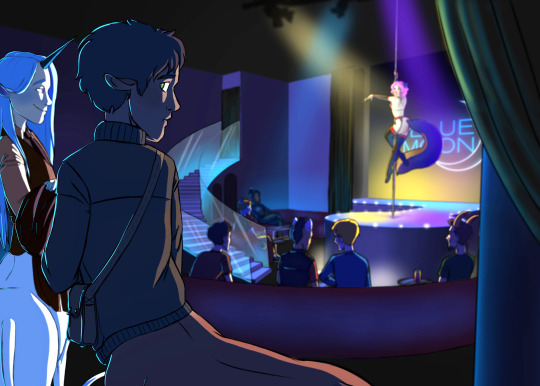

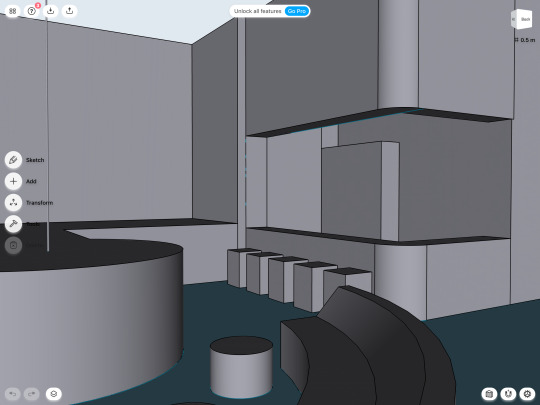
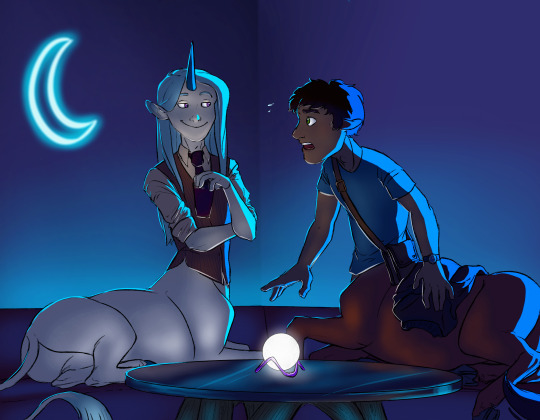
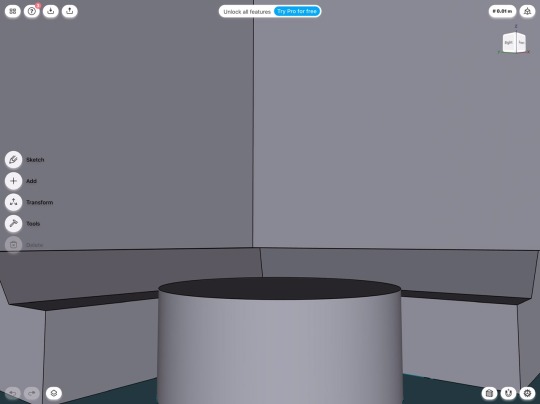
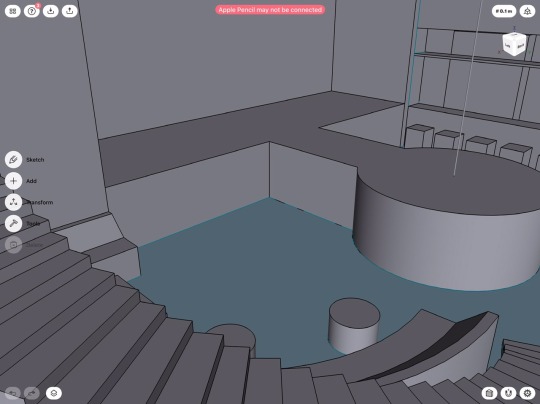
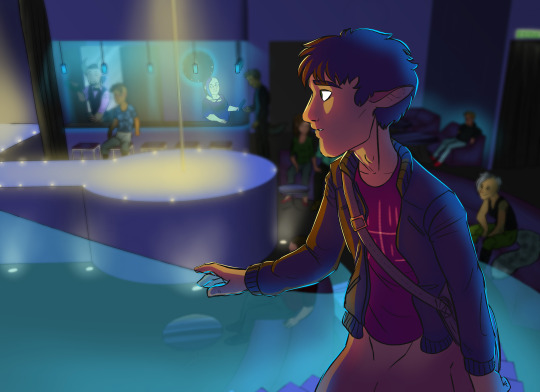
Was it a bit crazy of me to model the whole night club where Once In A Blue Moon is set? Maybe, but it did help me a lot to keep the club consistent and draw the characters with the proper scale ^^
You can see here illustrations from the book, and the screen shots I based myself on. Some of them aren't the exact one, I struggled digging up these because I had so many files laying about, and a lot of screenshots to pick from!
Originally done in 2020
Also, am I plugging my book in most of my posts? Yes. Yes I am.
Please go read it, it would mean the world to me! Even if it's a bit cheesy ^^
(AO3 link!)
#half human#original character#once in a blue moon#oiabm#modern centaurs#centaur#centaur au#taur#reference#interior reference#before and after#behind the scenes#graphic novel#novel#pole dacing#night club#interior design
12 notes
·
View notes
Text
Muito bom

'green corridor + yellow room' by joāo paulo feliciano, 1997 in 26ª bienal de são paulo (2004)
7K notes
·
View notes
Text
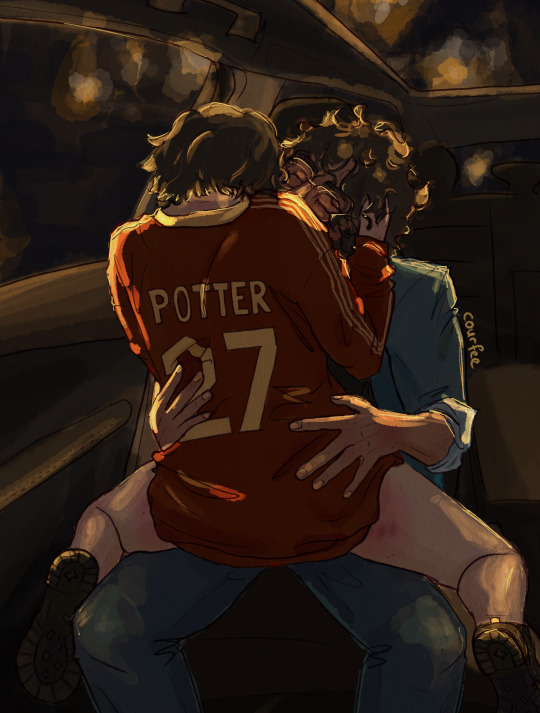
oby jeggy is a different kind of dsfkdsf so here is them from the first fic in that series, i will touch you with my mind by my love @itsjaywalkers
#jegulus#jegulus fanart#marauders fanart#regulus black#james potter#james x regulus#marauders#regulus black fanart#james potter fanart#starchaser#sunseeker#regulus x james#marauders era#hp#mine#my art#i fully ignored how cars work man there is a steering wheel somewhere technically#i looked at so many reference pictures of car interiors and realised#(after already having commited to the angle)#that this is not a view you could get from two people sitting in the front seat of a car. but alas. we ignore cars#less ignorable is the fact that somehow not just the car anatomy but also the people anatomy in this would just not work. how do legs ?????#i tried my best but even 24601 references couldnt help me out here so eh...#but laurie screamed at me about this yesterday so id say i succeded in what i had actually wanted to accomplish :)
7K notes
·
View notes
Text
Fantasy Guide to Interiors
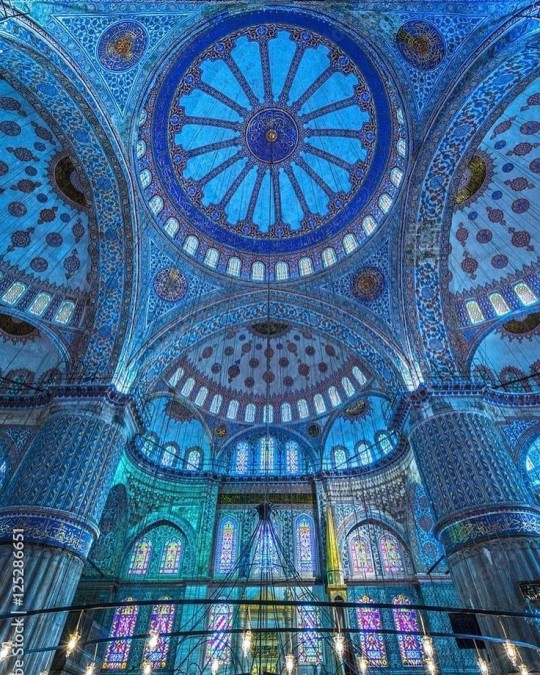
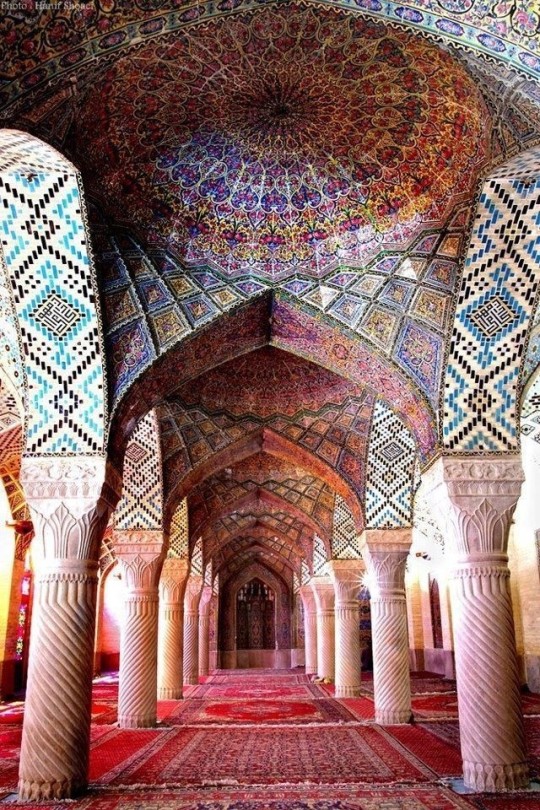
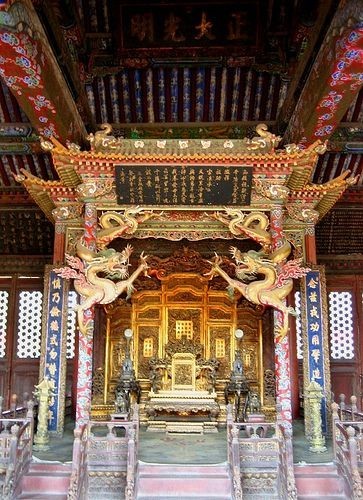
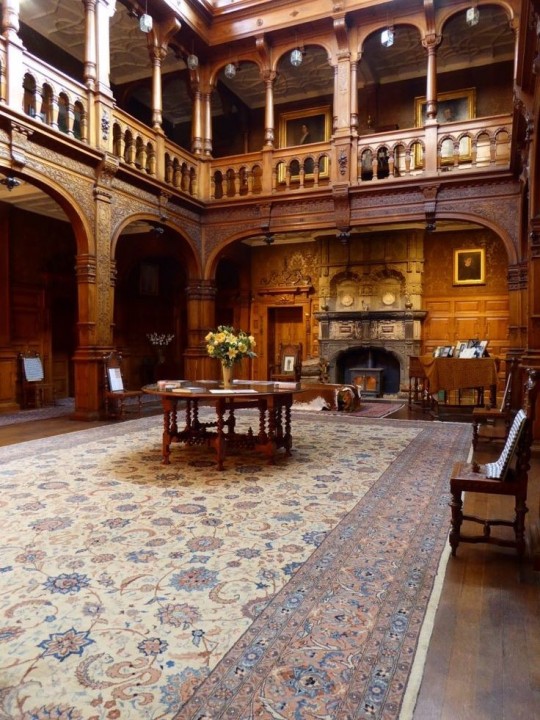
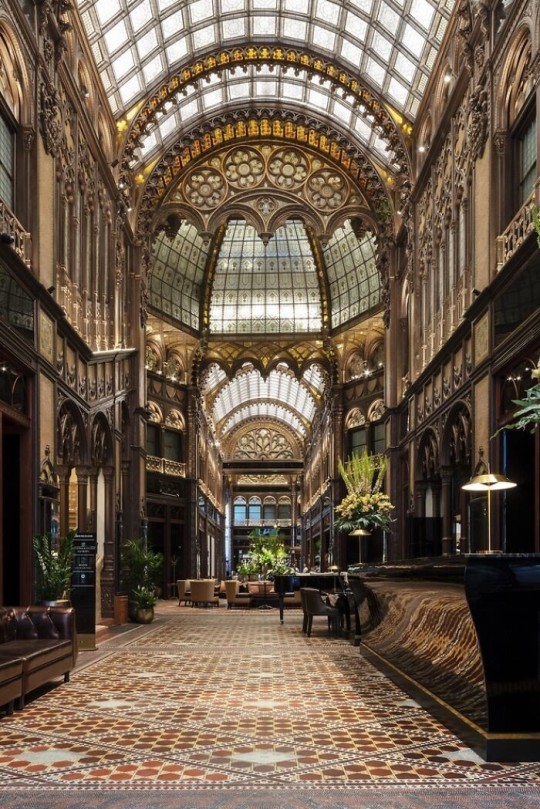
As a followup to the very popular post on architecture, I decided to add onto it by exploring the interior of each movement and the different design techniques and tastes of each era. This post at be helpful for historical fiction, fantasy or just a long read when you're bored.
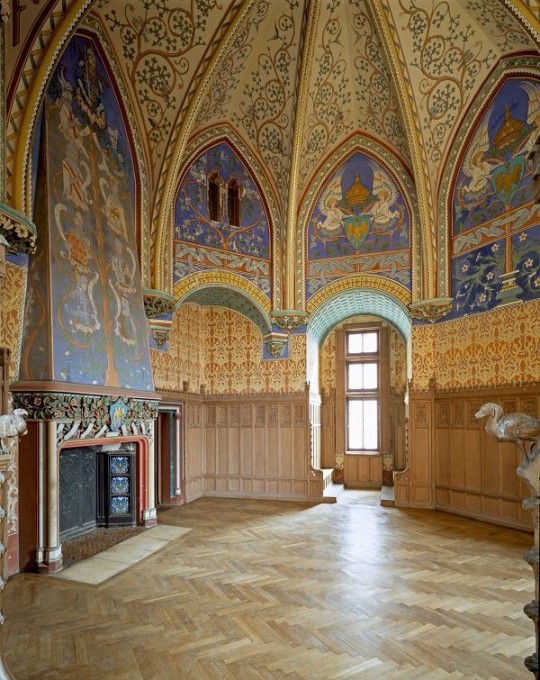
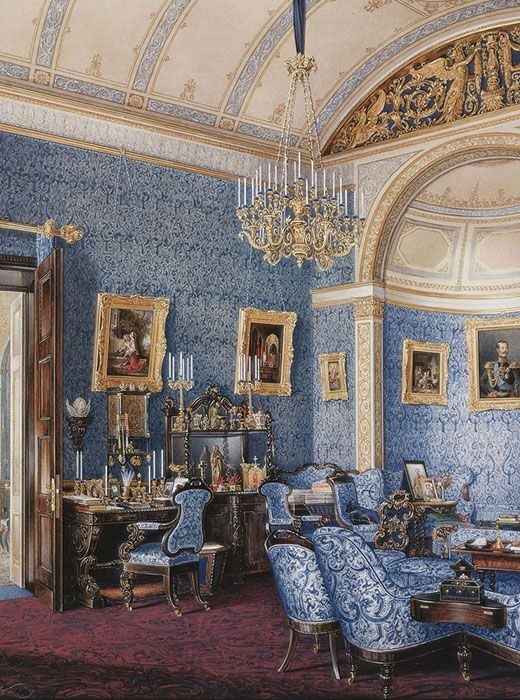
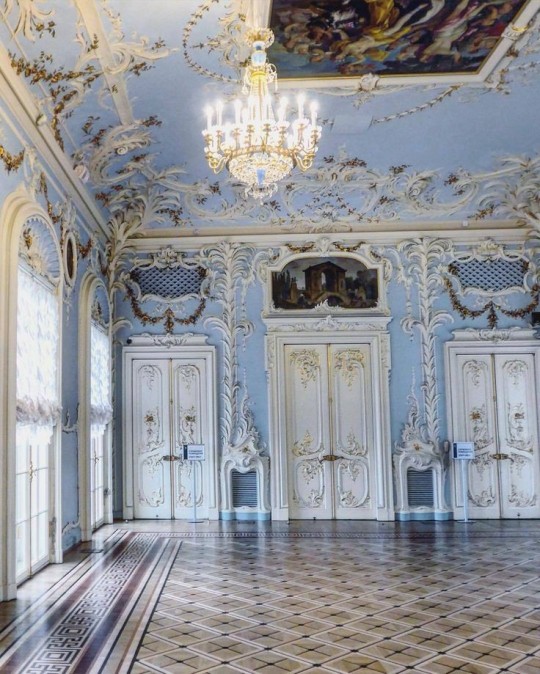
Interior Design Terms
Reeding and fluting: Fluting is a technique that consists a continuous pattern of concave grooves in a flat surface across a surface. Reeding is it's opposite.
Embossing: stamping, carving or moulding a symbol to make it stand out on a surface.
Paneling: Panels of carved wood or fabric a fixed to a wall in a continuous pattern.
Gilding: the use of gold to highlight features.
Glazed Tile: Ceramic or porcelain tiles coated with liquid coloured glass or enamel.
Column: A column is a pillar of stone or wood built to support a ceiling. We will see more of columns later on.
Bay Window: The Bay Window is a window projecting outward from a building.
Frescos: A design element of painting images upon wet plaster.
Mosaic: Mosaics are a design element that involves using pieces of coloured glass and fitted them together upon the floor or wall to form images.
Mouldings: ornate strips of carved wood along the top of a wall.
Wainscoting: paneling along the lower portion of a wall.
Chinoiserie: A European take on East Asian art. Usually seen in wallpaper.
Clerestory: A series of eye-level windows.
Sconces: A light fixture supported on a wall.
Niche: A sunken area within a wall.
Monochromatic: Focusing on a single colour within a scheme.
Ceiling rose: A moulding fashioned on the ceiling in the shape of a rose usually supporting a light fixture.
Baluster: the vertical bars of a railing.
Façade: front portion of a building
Lintel: Top of a door or window.
Portico: a covered structure over a door supported by columns
Eaves: the part of the roof overhanging from the building
Skirting: border around lower length of a wall
Ancient Greece
Houses were made of either sun-dried clay bricks or stone which were painted when they dried. Ground floors were decorated with coloured stones and tiles called Mosaics. Upper level floors were made from wood. Homes were furnished with tapestries and furniture, and in grand homes statues and grand altars would be found. Furniture was very skillfully crafted in Ancient Greece, much attention was paid to the carving and decoration of such things. Of course, Ancient Greece is ancient so I won't be going through all the movements but I will talk a little about columns.
Doric: Doric is the oldest of the orders and some argue it is the simplest. The columns of this style are set close together, without bases and carved with concave curves called flutes. The capitals (the top of the column) are plain often built with a curve at the base called an echinus and are topped by a square at the apex called an abacus. The entablature is marked by frieze of vertical channels/triglyphs. In between the channels would be detail of carved marble. The Parthenon in Athens is your best example of Doric architecture.
Ionic: The Ionic style was used for smaller buildings and the interiors. The columns had twin volutes, scroll-like designs on its capital. Between these scrolls, there was a carved curve known as an egg and in this style the entablature is much narrower and the frieze is thick with carvings. The example of Ionic Architecture is the Temple to Athena Nike at the Athens Acropolis.
Corinthian: The Corinthian style has some similarities with the Ionic order, the bases, entablature and columns almost the same but the capital is more ornate its base, column, and entablature, but its capital is far more ornate, commonly carved with depictions of acanthus leaves. The style was more slender than the others on this list, used less for bearing weight but more for decoration. Corinthian style can be found along the top levels of the Colosseum in Rome.
Tuscan: The Tuscan order shares much with the Doric order, but the columns are un-fluted and smooth. The entablature is far simpler, formed without triglyphs or guttae. The columns are capped with round capitals.
Composite: This style is mixed. It features the volutes of the Ionic order and the capitals of the Corinthian order. The volutes are larger in these columns and often more ornate. The column's capital is rather plain. for the capital, with no consistent differences to that above or below the capital.
Ancient Rome
Rome is well known for its outward architectural styles. However the Romans did know how to add that rizz to the interior. Ceilings were either vaulted or made from exploded beams that could be painted. The Romans were big into design. Moasics were a common interior sight, the use of little pieces of coloured glass or stone to create a larger image. Frescoes were used to add colour to the home, depicting mythical figures and beasts and also different textures such as stonework or brick. The Romans loved their furniture. Dining tables were low and the Romans ate on couches. Weaving was a popular pastime so there would be tapestries and wall hangings in the house. Rich households could even afford to import fine rugs from across the Empire. Glass was also a feature in Roman interior but windows were usually not paned as large panes were hard to make. Doors were usually treated with panels that were carved or in lain with bronze.
Ancient Egypt
Egypt was one of the first great civilisations, known for its immense and grand structures. Wealthy Egyptians had grand homes. The walls were painted or plastered usually with bright colours and hues. The Egyptians are cool because they mapped out their buildings in such a way to adhere to astrological movements meaning on special days if the calendar the temple or monuments were in the right place always. The columns of Egyptian where thicker, more bulbous and often had capitals shaped like bundles of papyrus reeds. Woven mats and tapestries were popular decor. Motifs from the river such as palms, papyrus and reeds were popular symbols used.
Ancient Africa
African Architecture is a very mixed bag and more structurally different and impressive than Hollywood would have you believe. Far beyond the common depictions of primitive buildings, the African nations were among the giants of their time in architecture, no style quite the same as the last but just as breathtaking.
Rwandan Architecture: The Rwandans commonly built of hardened clay with thatched roofs of dried grass or reeds. Mats of woven reeds carpeted the floors of royal abodes. These residences folded about a large public area known as a karubanda and were often so large that they became almost like a maze, connecting different chambers/huts of all kinds of uses be they residential or for other purposes.
Ashanti Architecture: The Ashanti style can be found in present day Ghana. The style incorporates walls of plaster formed of mud and designed with bright paint and buildings with a courtyard at the heart, not unlike another examples on this post. The Ashanti also formed their buildings of the favourite method of wattle and daub.
Nubian Architecture: Nubia, in modern day Ethiopia, was home to the Nubians who were one of the world's most impressive architects at the beginning of the architecture world and probably would be more talked about if it weren't for the Egyptians building monuments only up the road. The Nubians were famous for building the speos, tall tower-like spires carved of stone. The Nubians used a variety of materials and skills to build, for example wattle and daub and mudbrick. The Kingdom of Kush, the people who took over the Nubian Empire was a fan of Egyptian works even if they didn't like them very much. The Kushites began building pyramid-like structures such at the sight of Gebel Barkal
Japanese Interiors
Japenese interior design rests upon 7 principles. Kanso (簡素)- Simplicity, Fukinsei (不均整)- Asymmetry, Shizen (自然)- Natural, Shibumi (渋味) – Simple beauty, Yugen (幽玄)- subtle grace, Datsuzoku (脱俗) – freedom from habitual behaviour, Seijaku (静寂)- tranquillity.
Common features of Japanese Interior Design:
Shoji walls: these are the screens you think of when you think of the traditional Japanese homes. They are made of wooden frames, rice paper and used to partition
Tatami: Tatami mats are used within Japanese households to blanket the floors. They were made of rice straw and rush straw, laid down to cushion the floor.
Genkan: The Genkan was a sunken space between the front door and the rest of the house. This area is meant to separate the home from the outside and is where shoes are discarded before entering.
Japanese furniture: often lowest, close to the ground. These include tables and chairs but often tanked are replaced by zabuton, large cushions. Furniture is usually carved of wood in a minimalist design.
Nature: As both the Shinto and Buddhist beliefs are great influences upon architecture, there is a strong presence of nature with the architecture. Wood is used for this reason and natural light is prevalent with in the home. The orientation is meant to reflect the best view of the world.
Islamic World Interior
The Islamic world has one of the most beautiful and impressive interior design styles across the world. Colour and detail are absolute staples in the movement. Windows are usually not paned with glass but covered in ornate lattices known as jali. The jali give ventilation, light and privacy to the home. Islamic Interiors are ornate and colourful, using coloured ceramic tiles. The upper parts of walls and ceilings are usually flat decorated with arabesques (foliate ornamentation), while the lower wall areas were usually tiled. Features such as honeycombed ceilings, horseshoe arches, stalactite-fringed arches and stalactite vaults (Muqarnas) are prevalent among many famous Islamic buildings such as the Alhambra and the Blue Mosque.
Byzantine (330/395–1453 A. D)
The Byzantine Empire or Eastern Roman Empire was where eat met west, leading to a melting pot of different interior designs based on early Christian styles and Persian influences. Mosaics are probably what you think of when you think of the Byzantine Empire. Ivory was also a popular feature in the Interiors, with carved ivory or the use of it in inlay. The use of gold as a decorative feature usually by way of repoussé (decorating metals by hammering in the design from the backside of the metal). Fabrics from Persia, heavily embroidered and intricately woven along with silks from afar a field as China, would also be used to upholster furniture or be used as wall hangings. The Byzantines favoured natural light, usually from the use of copolas.
Indian Interiors
India is of course, the font of all intricate designs. India's history is sectioned into many eras but we will focus on a few to give you an idea of prevalent techniques and tastes.
The Gupta Empire (320 – 650 CE): The Gupta era was a time of stone carving. As impressive as the outside of these buildings are, the Interiors are just as amazing. Gupta era buildings featured many details such as ogee (circular or horseshoe arch), gavaksha/chandrashala (the motif centred these arches), ashlar masonry (built of squared stone blocks) with ceilings of plain, flat slabs of stone.
Delhi Sultanate (1206–1526): Another period of beautifully carved stone. The Delhi sultanate had influence from the Islamic world, with heavy uses of mosaics, brackets, intricate mouldings, columns and and hypostyle halls.
Mughal Empire (1526–1857): Stonework was also important on the Mughal Empire. Intricately carved stonework was seen in the pillars, low relief panels depicting nature images and jalis (marble screens). Stonework was also decorated in a stye known as pietra dura/parchin kari with inscriptions and geometric designs using colored stones to create images. Tilework was also popular during this period. Moasic tiles were cut and fitted together to create larger patters while cuerda seca tiles were coloured tiles outlined with black.
Chinese Interiors
Common features of Chinese Interiors
Use of Colours: Colour in Chinese Interior is usually vibrant and bold. Red and Black are are traditional colours, meant to bring luck, happiness, power, knowledge and stability to the household.
Latticework: Lattices are a staple in Chinese interiors most often seen on shutters, screens, doors of cabinets snf even traditional beds.
Lacquer: Multiple coats of lacquer are applied to furniture or cabinets (now walls) and then carved. The skill is called Diaoqi (雕漆).
Decorative Screens: Screens are used to partition off part of a room. They are usually of carved wood, pained with very intricate murals.
Shrines: Spaces were reserved on the home to honour ancestors, usually consisting of an altar where offerings could be made.
Of course, Chinese Interiors are not all the same through the different eras. While some details and techniques were interchangeable through different dynasties, usually a dynasty had a notable style or deviation. These aren't all the dynasties of course but a few interesting examples.
Song Dynasty (960–1279): The Song Dynasty is known for its stonework. Sculpture was an important part of Song Dynasty interior. It was in this period than brick and stone work became the most used material. The Song Dynasty was also known for its very intricate attention to detail, paintings, and used tiles.
Ming Dynasty(1368–1644): Ceilings were adorned with cloisons usually featuring yellow reed work. The floors would be of flagstones usually of deep tones, mostly black. The Ming Dynasty favoured richly coloured silk hangings, tapestries and furnishings. Furniture was usually carved of darker woods, arrayed in a certain way to bring peace to the dwelling.
Han Dynasty (206 BC-220 AD): Interior walls were plastered and painted to show important figures and scenes. Lacquer, though it was discovered earlier, came into greater prominence with better skill in this era.
Tang Dynasty (618–907) : The colour palette is restrained, reserved. But the Tang dynasty is not without it's beauty. Earthenware reached it's peak in this era, many homes would display fine examples as well. The Tang dynasty is famous for its upturned eaves, the ceilings supported by timber columns mounted with metal or stone bases. Glazed tiles were popular in this era, either a fixed to the roof or decorating a screen wall.
Romanesque (6th -11th century/12th)
Romanesque Architecture is a span between the end of Roman Empire to the Gothic style. Taking inspiration from the Roman and Byzantine Empires, the Romanesque period incorporates many of the styles. The most common details are carved floral and foliage symbols with the stonework of the Romanesque buildings. Cable mouldings or twisted rope-like carvings would have framed doorways. As per the name, Romansque Interiors relied heavily on its love and admiration for Rome. The Romanesque style uses geometric shapes as statements using curves, circles snf arches. The colours would be clean and warm, focusing on minimal ornamentation.
Gothic Architecture (12th Century - 16th Century)
The Gothic style is what you think of when you think of old European cathedrals and probably one of the beautiful of the styles on this list and one of most recognisable. The Gothic style is a dramatic, opposing sight and one of the easiest to describe. Decoration in this era became more ornate, stonework began to sport carving and modelling in a way it did not before. The ceilings moved away from barreled vaults to quadripartite and sexpartite vaulting. Columns slimmed as other supportive structures were invented. Intricate stained glass windows began their popularity here. In Gothic structures, everything is very symmetrical and even.
Mediaeval (500 AD to 1500)
Interiors of mediaeval homes are not quite as drab as Hollywood likes to make out. Building materials may be hidden by plaster in rich homes, sometimes even painted. Floors were either dirt strewn with rushes or flagstones in larger homes. Stonework was popular, especially around fireplaces. Grand homes would be decorated with intricate woodwork, carved heraldic beasts and wall hangings of fine fabrics.
Renaissance (late 1300s-1600s)
The Renaissance was a period of great artistry and splendor. The revival of old styles injected symmetry and colour into the homes. Frescoes were back. Painted mouldings adorned the ceilings and walls. Furniture became more ornate, fixed with luxurious upholstery and fine carvings. Caryatids (pillars in the shape of women), grotesques, Roman and Greek images were used to spruce up the place. Floors began to become more intricate, with coloured stone and marble. Modelled stucco, sgraffiti arabesques (made by cutting lines through a layer of plaster or stucco to reveal an underlayer), and fine wall painting were used in brilliant combinations in the early part of the 16th century.
Tudor Interior (1485-1603)
The Tudor period is a starkly unique style within England and very recognisable. Windows were fixed with lattice work, usually casement. Stained glass was also in in this period, usually depicting figures and heraldic beasts. Rooms would be panelled with wood or plastered. Walls would be adorned with tapestries or embroidered hangings. Windows and furniture would be furnished with fine fabrics such as brocade. Floors would typically be of wood, sometimes strewn with rush matting mixed with fresh herbs and flowers to freshen the room.
Baroque (1600 to 1750)
The Baroque period was a time for splendor and for splashing the cash. The interior of a baroque room was usually intricate, usually of a light palette, featuring a very high ceiling heavy with detail. Furniture would choke the room, ornately carved and stitched with very high quality fabrics. The rooms would be full of art not limited to just paintings but also sculptures of marble or bronze, large intricate mirrors, moldings along the walls which may be heavily gilded, chandeliers and detailed paneling.
Victorian (1837-1901)
We think of the interiors of Victorian homes as dowdy and dark but that isn't true. The Victorians favoured tapestries, intricate rugs, decorated wallpaper, exquisitely furniture, and surprisingly, bright colour. Dyes were more widely available to people of all stations and the Victorians did not want for colour. Patterns and details were usually nature inspired, usually floral or vines. Walls could also be painted to mimic a building material such as wood or marble and most likely painted in rich tones. The Victorians were suckers for furniture, preferring them grandly carved with fine fabric usually embroidered or buttoned. And they did not believe in minimalism. If you could fit another piece of furniture in a room, it was going in there. Floors were almost eclusively wood laid with the previously mentioned rugs. But the Victorians did enjoy tiled floors but restricted them to entrances. The Victorians were quite in touch with their green thumbs so expect a lot of flowers and greenery inside. with various elaborately decorated patterned rugs. And remember, the Victorians loved to display as much wealth as they could. Every shelf, cabinet, case and ledge would be chocked full of ornaments and antiques.
Edwardian/The Gilded Age/Belle Epoque (1880s-1914)
This period (I've lumped them together for simplicity) began to move away from the deep tones and ornate patterns of the Victorian period. Colour became more neutral. Nature still had a place in design. Stained glass began to become popular, especially on lampshades and light fixtures. Embossing started to gain popularity and tile work began to expand from the entrance halls to other parts of the house. Furniture began to move away from dark wood, some families favouring breathable woods like wicker. The rooms would be less cluttered.
Art Deco (1920s-1930s)
The 1920s was a time of buzz and change. Gone were the refined tastes of the pre-war era and now the wow factor was in. Walls were smoother, buildings were sharper and more jagged, doorways and windows were decorated with reeding and fluting. Pastels were in, as was the heavy use of black and white, along with gold. Mirrors and glass were in, injecting light into rooms. Gold, silver, steel and chrome were used in furnishings and decor. Geometric shapes were a favourite design choice. Again, high quality and bold fabrics were used such as animal skins or colourful velvet. It was all a rejection of the Art Noveau movement, away from nature focusing on the man made.
Modernism (1930 - 1965)
Modernism came after the Art Deco movement. Fuss and feathers were out the door and now, practicality was in. Materials used are shown as they are, wood is not painted, metal is not coated. Bright colours were acceptable but neutral palettes were favoured. Interiors were open and favoured large windows. Furniture was practical, for use rather than the ornamentation, featuring plain details of any and geometric shapes. Away from Art Deco, everything is straight, linear and streamlined.
#This took forever#I'm very tired#But enjoy#I covered as much as I could find#Fantasy Guide to interiors#interior design#Architecture#writings#writing resources#Writing reference#Writing advice#Writer's research#writing research#Writer's rescources#Writing help#Mediaeval#Renaissance#Chinese Interiors#Japanese Interiors#Indian interiors#writing#writeblr#writing reference#writing advice#writer#spilled words#writers
5K notes
·
View notes
Text
take me to the portuguese disco cistern, please

El Jadida - Cisterne Portugaise, 16th Century
8K notes
·
View notes
Note
Hello it's my first time asking I don't speak English frequently so excuse me if i made a mistake
can you draw caramel arrow cookie teaching reader how to make a campfire and stargazing
I really love how you draw her

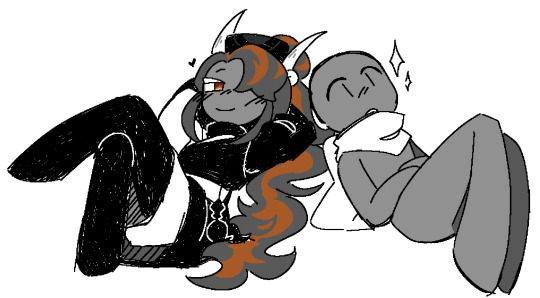
Thank you for the kind words! //^^//
#ohhhh if you ever wanted to learn about outdoor survival she is your gal#also she would 100% know the best places to stargaze because shes outdoors so often. her Lookout is probably a good spot too!#i should make a little interior of her lookout. its mapped out in my brain but not irl#anywho tag time!#cookie run x reader#cookie run kingdom x reader#caramel arrow x reader#[🧋]#hehe im a little impressed i dont really need a reference for drawing her anymore#i still use one to be sure but im definitely getting to the point where i just have a 3d model of her spinning in my brain 24/7#microwaving her out of love forever#dreamydraws
423 notes
·
View notes
Text

Metropolitan Toronto Reference Library, Toronto, 1973-77.
Architect: Raymond Moriyama
#architecture#modernism#library#interior#Raymond Moriyama#Metropolitan Toronto Reference Library#Toronto#Ontario#Canada#1970s
6K notes
·
View notes
Text
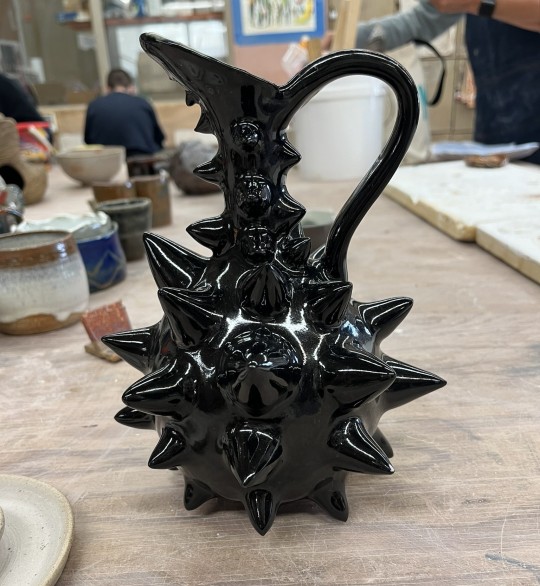
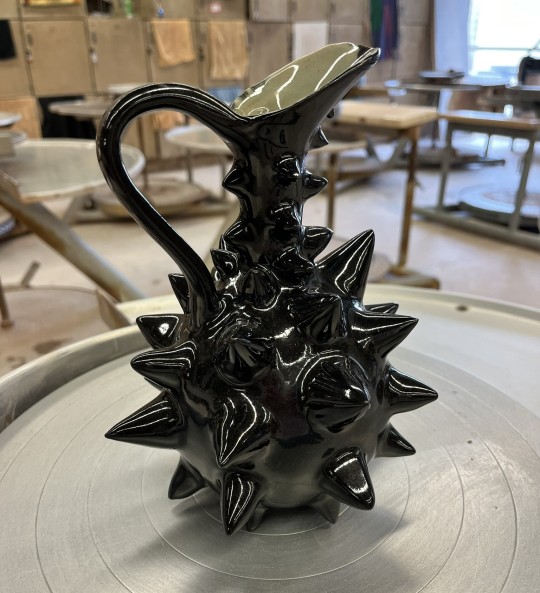
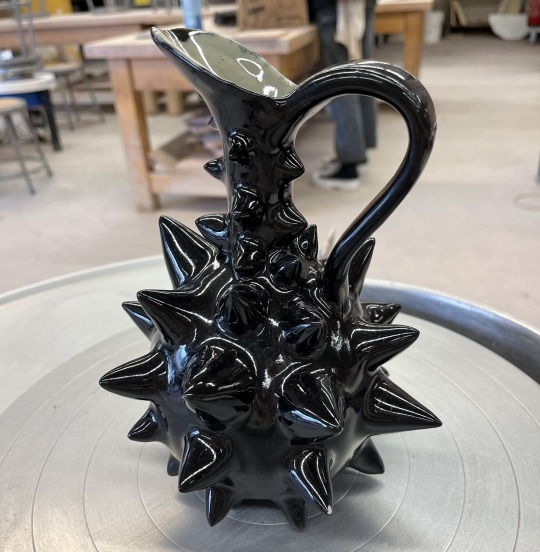
LOOK AT THIS VASE I MADE IN MY CERAMCS CLASS IT WAS REALLY HARD AND THERE WERE SO MANY RISKS BUT I DID IT AND NOTHING WENT WRONG ITS A MIRACLE (also i know NOW it looks like ferrofluid, but it was actually not the intention from the start LOL) If you're curious as to the inspo + process, it was inspired by this minoan jug on the left! It was made in two parts, and was originally supposed to be sleeker, longer, and smaller spikes but uhh look I'm not very good at ceramics LOL. So the size of the spikes and the more round shape.. already not on purpose, a byproduct of my lack of skill.
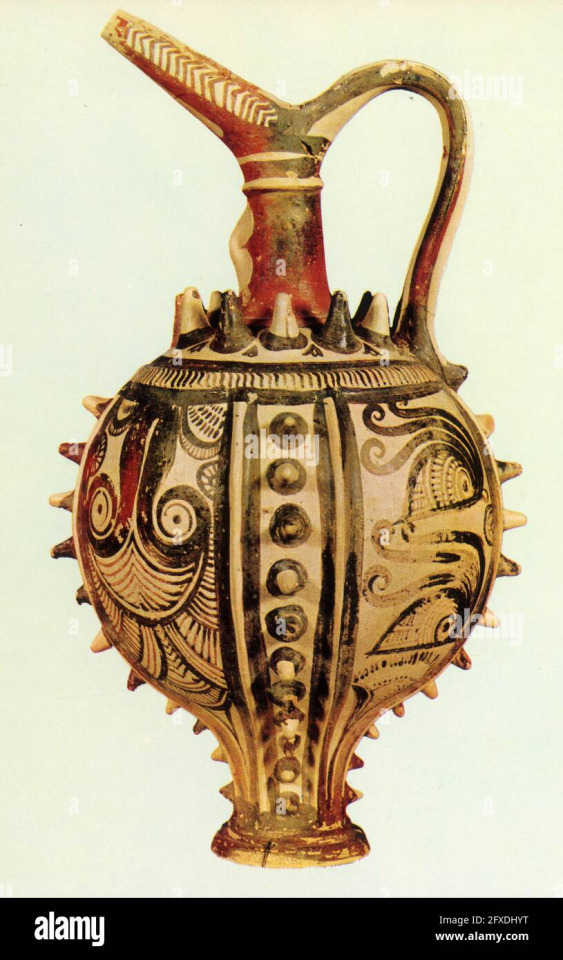

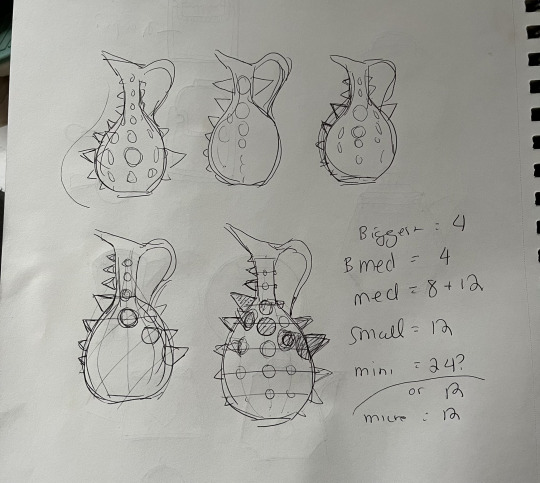
There was a lot of waffling on what colors I wanted to do, I had floated Squeakoid colors (white base, colorful spikes), all black, tenmoku (black but breaks brown), as well as half and half.
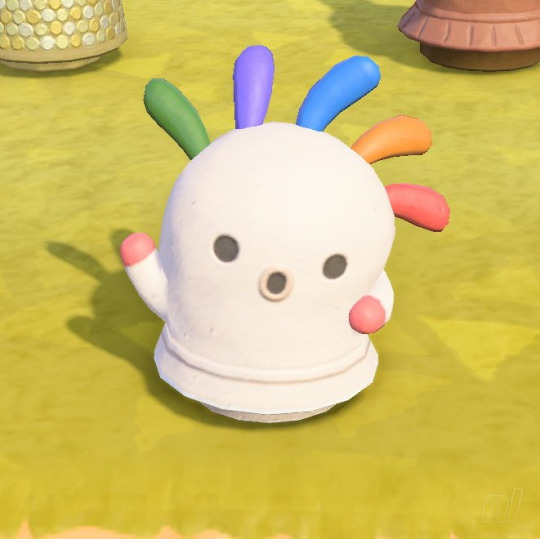

I decided on black in the end because DARK GOTH VIBES and my teacher felt the shape was so much already that simple black would highlight the silhouette and not be too busy. And that's how in the end it turned into a ferrofluid vase by accident LMFAO
#ceramics#spiked vase#mace vase#my husband said “mace vase” as soon as he saw it#and all i could say was i wish i thought of that first LOL#the mace shape was not intentional as i said so#i had none of these clever thoughts#ferrofluid#someone on twitter said ferrofluid flagon#rofl#people were also saying it's venom as a vase#like eddie i'm a vase now#AND there's people saying it's like harkonnen interior design LMFAO#the amount of references people are pulling is so funny
1K notes
·
View notes
Text

Supernatural September | Day 1 - On the road
#spnsept24#destiel#destiel fanart#destiel art#dean Winchester#castiel#I’m 11 days late to this but shh lol#I wanna do this prompt list bc I love prompt lists lmao#was I a chicken and decided to do an interior bc I hate drawing the outside othe car? yes lmao#but that’s okay I saw this reference image from inside baby and I’m like ooooo I know what I wanna do
559 notes
·
View notes
Photo

3h timed commission for saynajaye timed commissions form and info / HD picture with alts
#artists on tumblr#tumblr artists#BRart#brazilian artists#latino artists#brazilian artist#BRartist#latino artist#sleepover#furry#bedroom#room#scene#interior#cozy#cute#comfy#chill#friends#friendship#platonic#feline#avian#anthro#vulture#bird#pink#black#rw reference
154 notes
·
View notes
Text

lukeys new lab but with actual color
#honestly im kinda shit with interiors#but landscapes are better anyways so#ive made like 3 diff versions for this but i think i like this one best....#and also i had to recreate this in minecraft bc i couldnt find a good ss for reference LMAO#lukeytv#tr!lukey#the realm smp#the realm#trsmp#trsmp fanart
166 notes
·
View notes
Text
OP decorated her room in the style of Dream of the Red Chamber for a warm winter (classic chinese style) by 古风控
#china#interiors#gufeng#video#reference#cozy#my friend said why all the posts lately are meme can we have some elegance#I said yes#soothing music
389 notes
·
View notes
Text
Writing Notes: Cool Colors

Cool Colors - any hues on the color wheel (a circle diagram that illustrates the relationships between different colors) that have a “cool” temperature.
Cool colors skew closer to blue, generally considered the coolest color on the wheel.
Colors closer to yellow—considered the warmest color on the wheel—are warm colors.
How to Identify Color Temperature
You can learn determine whether you’re working with a warm or a cool color by:
Pinpointing the mass tone: The first way to find color temperature is to assess whether the color is closer to yellow or blue on the color wheel. Colors with a mass tone—or the first identifiable color—closer to yellow than blue are warm, and those closer to blue are cool.
Detecting the undertones. Many colors with a mass tone that is either warm or cool will have the opposite undertone, an underlying tone that can affect how you see a color. For example, a blue with red undertones gives the color more warmth. Undertones can make a particular color lighter or duller, or warmer or cooler.
Comparing to similar colors. To figure out the temperature of a particular color, look at the color beside it or other similar colors to determine its relative temperature and measure its mass tones against its undertones. You can try a paint color swatch wall at a homewares store, where you can see hundreds of variations on a single color side by side. Determine the warmth or coolness of the mass tone—which should either be closer to yellow or blue and then identify whether the color’s undertones make the mass tone cooler or warmer. For example, when looking at two different reds, one red may have a yellow undertone, while the other may have a blue undertone. The yellow-red would be a warm red, while the blue-red would be a cool red.
Relationship Between Cool & Warm Colors
Color theory is a method of working with colors based on the color wheel, which charts how the color relationships between the various warm and cool hues.
The standard warm colors are reds, oranges, and yellows, while the cool colors are blues, greens, and purples.
However, all colors have warm and cool variations.
Warm vs. Cool Colors
The color wheel has a warm color half and a cool color half. Beyond being across each other on the color wheel, there are a few notable differences between warm and cool colors, including:
Mood: Cool colors appear cool in temperature, which gives them a calming effect. Warm colors evoke warmth and coziness and have an energizing effect.
Focus: Cool-colored objects recede into the background. In paintings, they can add depth or perspective. In painting and décor, warm-colored objects spring forward and attract light.
Usage: You can generally use cool colors for bathrooms and bedrooms, where relaxation is important. They can make smaller rooms feel bigger. Warm colors make an impact in rooms where people are more likely to gather, such as living rooms and kitchens. They can make a bigger room more inviting.
How to Use Cool Colors in Interior Design
Here are some tips for using cool colors in the color palette for your next interior design project:
Consider a room's function. Color temperature inspires different moods. Cool colors are relaxing, while warm colors are energizing. Think of this when choosing a color scheme for particular rooms in your home.
Start with neutrals. Start with a base of neutral colors (white, black, gray) in your décor, which will act as a canvas for your dominant color scheme. Keep major pieces of furniture neutral to give yourself more room to play with accent colors. If you want to create a consistently cooler atmosphere, ensure your large pieces of furniture and walls are all cool colors.
Play with color mixing. Choose accent pieces with complementary colors to your cool or neutral base to give your room a dynamic color palette. For example, if you're using blues and greens as your base, throw in some cool colors with warm undertones or some warm colors with blue undertones to prevent the color scheme from becoming too flat.
Go monochromatic. You may want to go all monochromatic with a single cool color for an extra calming atmosphere. If you've chosen a single color, such as green, to dominate your space, you can create points of interest by including both cool greens and warm greens to liven up the color scheme.
Cool hues evoke relaxation and calm, while warmer colors inspire energy and life.
Of the 3 main cool colors, one is a primary color (blue) and two are secondary colors (green and purple). Any tertiary color that has elements of cool blue has a cool undertone.
Source ⚜ More: Notes & References ⚜ Writing Resources PDFs
#colors#colours#writing reference#writeblr#literature#dark academia#writers on tumblr#interior design#worldbuilding#spilled ink#writing prompt#creative writing#light academia#writing ideas#writing inspiration#writing resources
78 notes
·
View notes
Text
INTERNET!!!! THE TIME HAS COME AGAIN. I AM IN DIRE NEED OF YOUR AID!!! Send me:
Turtle Tank Pics 🙏🙏 exterior specifically, any angle
2K notes
·
View notes
Text
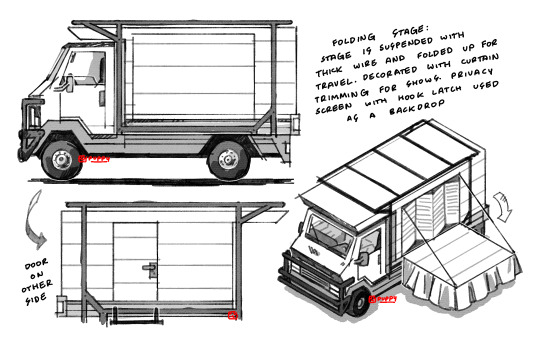
sleights van
#im gonna do the interior tmrw but im pretty happy with how these turned out#i used the volvo laplander as reference for the front and the rest is based on a honda mini pickup truck#the bars around the chassis was an afterthought.. partly bc i thought it would look cool and partly because i thought#it would be good to add something to keep the trailer attachment in place.. i think theyre used more for offroad vehicles though idk#the folding screen is also partly to block out the view of sleights room and its painted with stars to act as a backdrop#idk if the stage is strong enough to support her weight with just thick wires keeping it suspended so.. maybe smth like#a table or chair gets wedged underneath to support it from the bottom too. i just couldnt fit it on there#myart#my art#my oc#oc#sleight#concept art#doodles#vehicles#sketches#wip#idk if im gonna color this i think ill just leave it like this
309 notes
·
View notes
Text




Lewis Hamilton at the 2025 Met Gala | @/voguefrance
#lewis hamilton#autumn posts#AHHHH what an absolutely amazing met gala!!!#❤️✨❤️💫🔥❤️✨#so happy for lewis 🥺❤️ and what an incredible look#the detailing the references and inspiration the tailoring#gosh this met was a dream for gorgeous tailoring and beautiful suits and incredible inspired looks#janelle of course always kills it#other faves were lupita shaboozey jennie and damson's reveal was fun#rolling up in the car too i did olivia-wilde-nod.gif they are throwing their whole marketussy into the film#i dont feel i'll be paying to see it but i do love a reveal on the gala carpet#and goodness what a carpet!! stun!!! the flowers and interior design as a whole was transcendent#i still haven't seen all the after partyyy looks too#anyways i have much to catch up on!! i haven't even gone through my saved miami moments 😖#they are coming!!#but i always love seeing the met and all the looks and ahh just over the moon for lewis#i am catching up via articles and insta stories so much to see still#what a night!!#an amazing moment and spotlight
57 notes
·
View notes